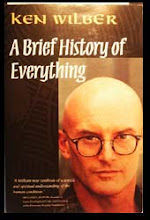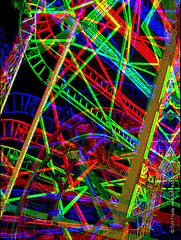What if you could glance at a document and see the overlaps between your thinking and that of many other readers, including the input of smart machines. Would you learn faster, think bigger, and come up with better solutions to problems? And might such a process support worldwide dissemination of multiple perspectives? This is the dream of genius entrepreneur David Lebow, founder of the startup HyLighter.
In grad school, Lebow set himself the goal of coming up with a new idea for improving education. But after vast research, he realized he was only regurgitating the ideas of others. So he took scissors to his sources and spread clippings across his living room floor, arranging and rearranging ideas to see connections. The result was an "Aha" moment that led him to write an award winning paper that is still influencing how we teach twenty years later.*
It became Lebow's passion to automate his thinking process so that others could benefit it from it. His initial impulse was to help instill love of learning among young students. But the system he developed may equally serve to track terrorists, solve corporate problems, get loans to 3rd world farmers, harmonize world religions, and turn academics into gleeful pigs in slop.
All the World's Sacred Texts
 I met David while he was in the Washington DC area recently to attend Idea Connect. When he told me he was looking for groups to beta test his system, I knew just who to connect him with: my fellow Integral fans at One Spirit Wisdom Integration Circle (OSWIC) who are plumbing the sacred texts of all world religions to find common themes and Integral memes. Indeed it was pigs in slop all the way down when I introduced him to developmental psychologist Barbara Kinney and Pakistani academic Nomi Naeem who works for Brooklyn Public Library while writing a masters thesis on Integral approaches to education. Excited talk of "social sense making" and "curated conversations" hinted at new possibilities for how we learn and work together.
I met David while he was in the Washington DC area recently to attend Idea Connect. When he told me he was looking for groups to beta test his system, I knew just who to connect him with: my fellow Integral fans at One Spirit Wisdom Integration Circle (OSWIC) who are plumbing the sacred texts of all world religions to find common themes and Integral memes. Indeed it was pigs in slop all the way down when I introduced him to developmental psychologist Barbara Kinney and Pakistani academic Nomi Naeem who works for Brooklyn Public Library while writing a masters thesis on Integral approaches to education. Excited talk of "social sense making" and "curated conversations" hinted at new possibilities for how we learn and work together.Meaning, Mormons, and Motorcycle Maintenance
Because I used to teach the document commenting system of Adobe Acrobat, I was eager to get a peek at how Hylighter compares. So Lebow gave me a testing account into which I uploaded some Ken Wilber essays and the Sharma-Cook Greuter paper on Polarities and Ego Development. I test drove HyLighter's ability to cross-link documents in the system and on the Web. And within ten minutes I was having that Internet wormhole experience where one delightful stumble-upon leads to another. A Sharma-Cook Greuter reference to too much meaning-making sparked a thought that led me to a book about mythology in Mormonism, Tinkling Cymbals and Sounding Brass. Then I was off to a forum for fans of Robert Pirsig's Zen and the Art of Motorcycle Maintenance, where the instructions to new members fascinated me for twenty minutes and reinforced my belief that Pirsig's work foreshadows Wilber's. I put those links into my comments on the Sharma, Cook Greuter paper. So the question is, will other readers find them to be as titilating as I did?Possibilities and Work to Do
After numerous readers have placed comments, links, and tags in a document, those items can be assembled into various reports including a "mashup" of comments, links and tags common to many documents. Lebow says HyLighter needs several more months to work out bugs and build a sleeker interface. But it already looks to me like a tool that can greatly enhance how we integrate the vast amounts of data we must swim through to reach the new perspectives we need. |
| HyLighter screenshot shows on the left multiple reader comments for each fragment of highlighted text. Comments from many documents can be assembled into a Mashup as illustrated below. |
 |
| Illustration of a Hylighter Mashup showing reader comments from many documents on selected topics. Illustrations from Hylighter.com. |
* Constructivist Values for Instructional Systems Design: Five Principles toward a New Mindset, David Lebow, 1995













